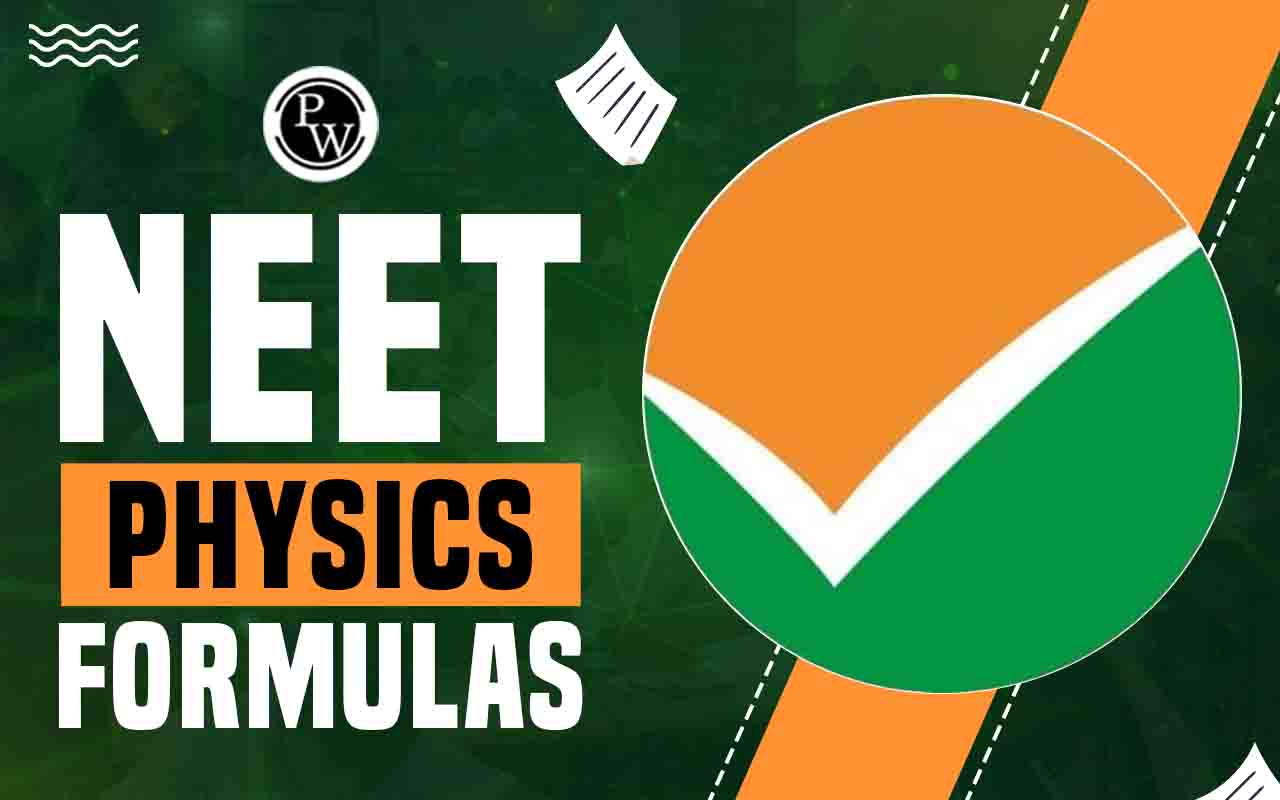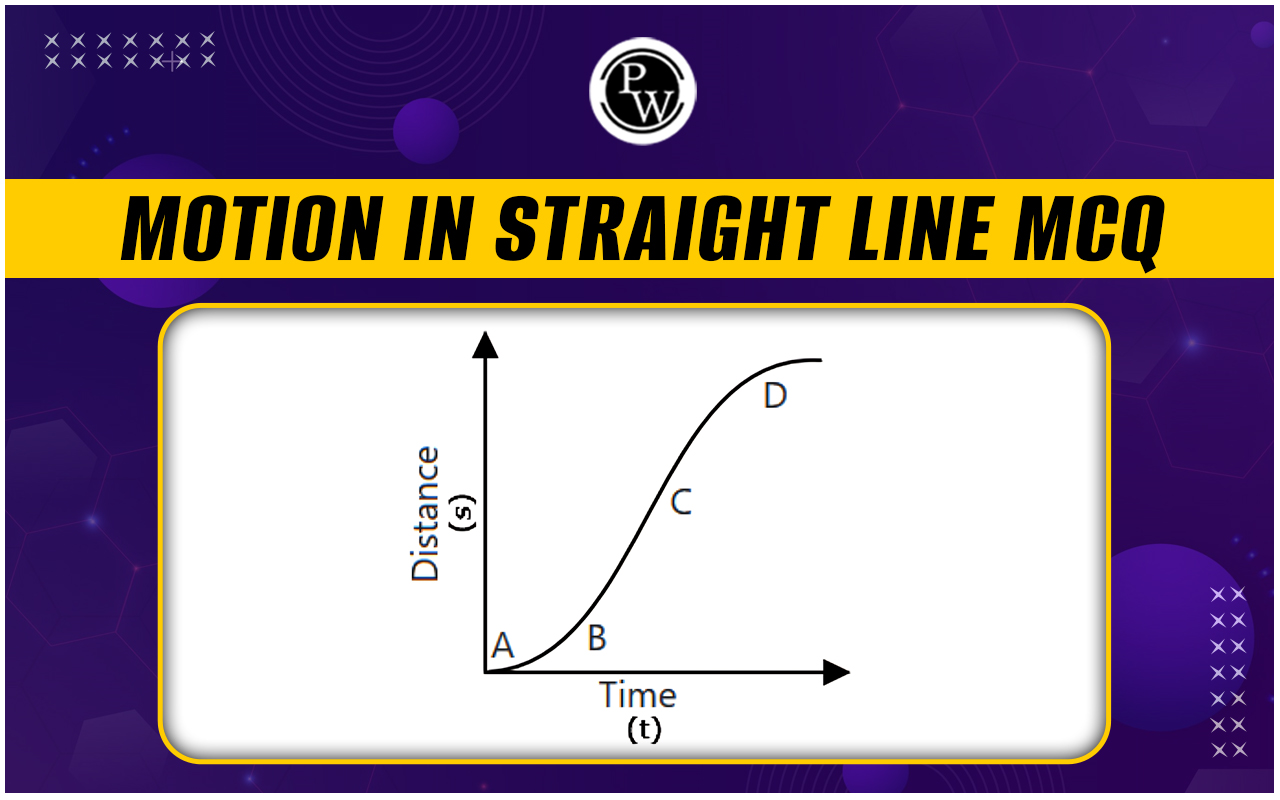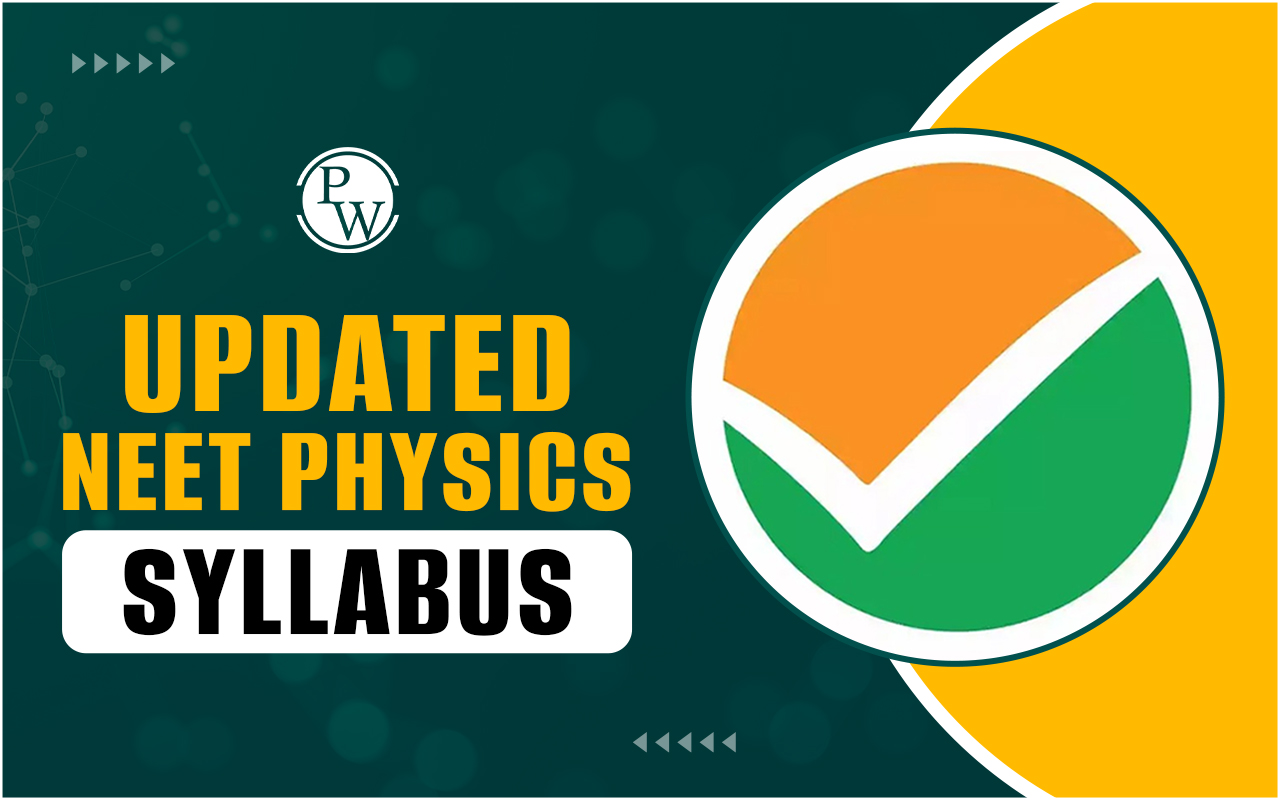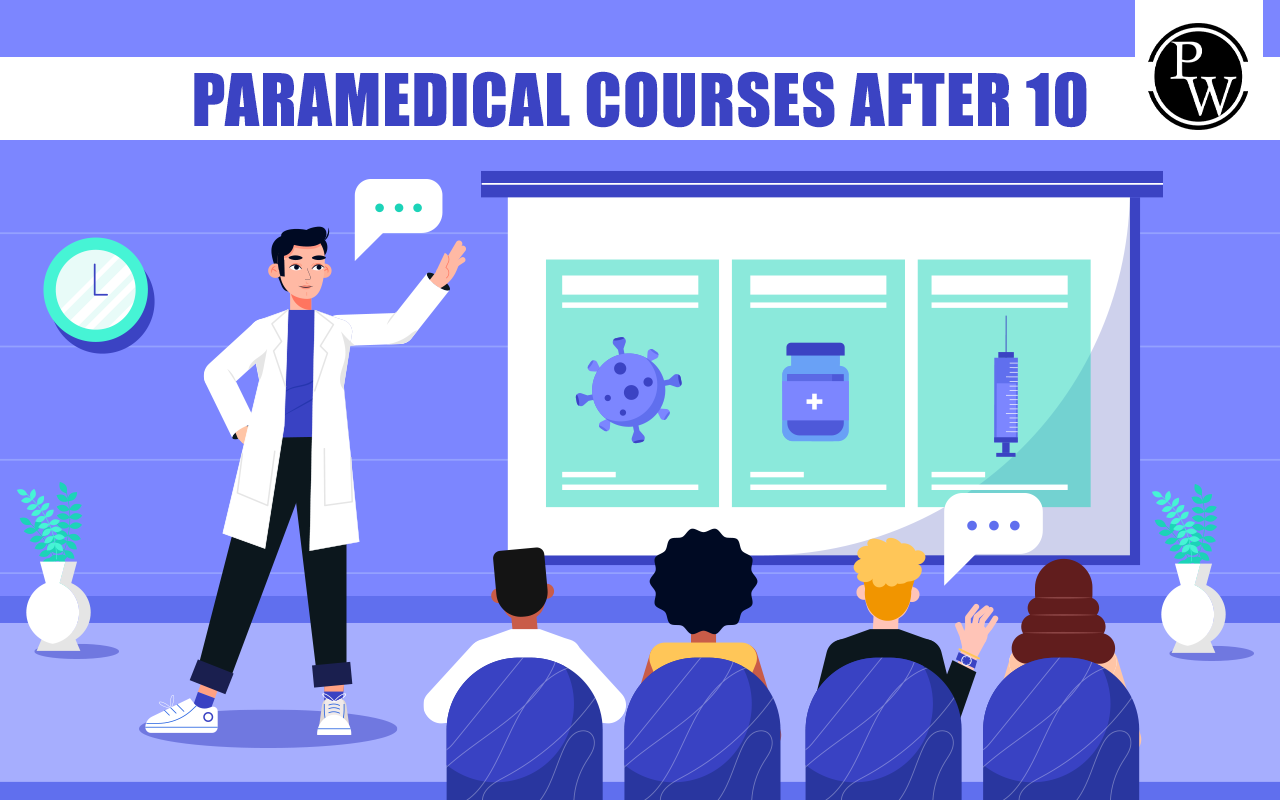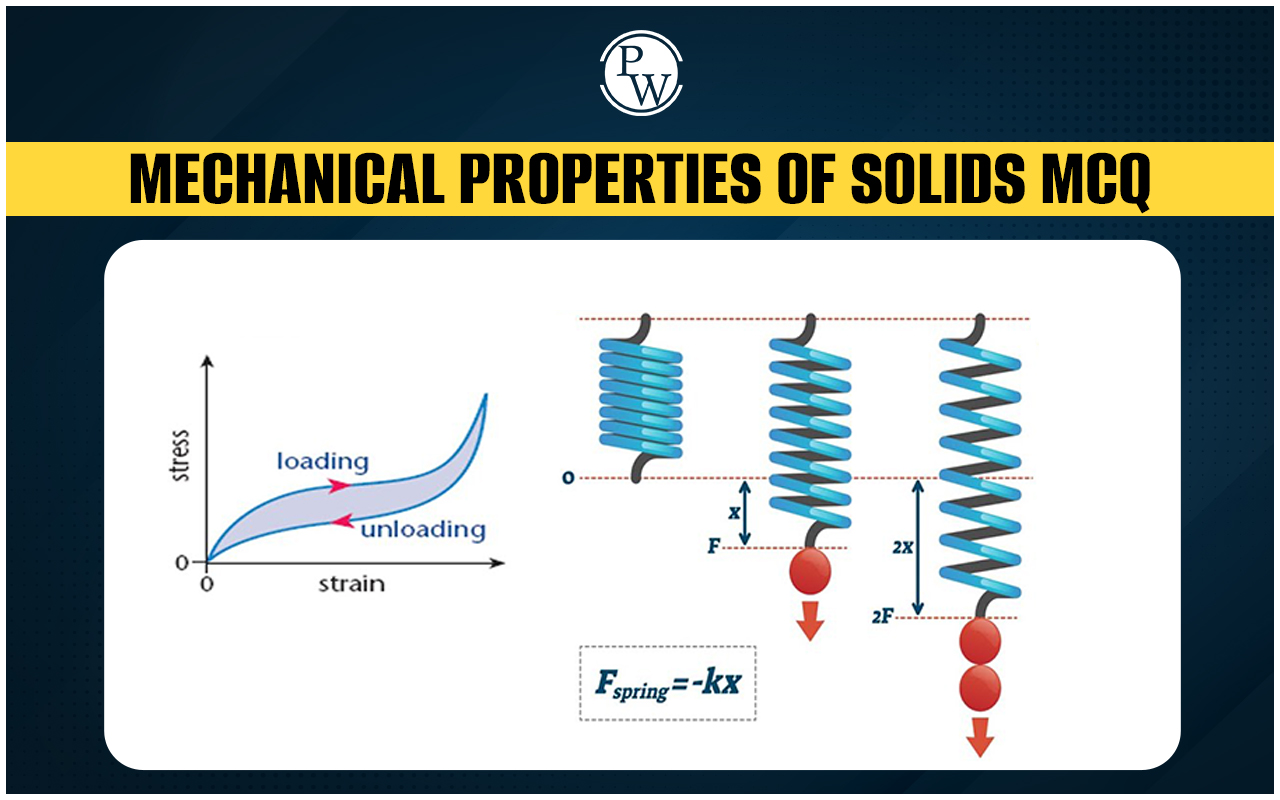
Mechanical Properties of Solids MCQs: The chapter on Mechanical Properties of Solids in Class 11 Physics is fundamental for understanding how materials behave under different forces and conditions. This topic is important for both CBSE board exams and competitive exams like NEET. Class 11 Physics Chapter 9 covers key concepts such as elasticity, stress, strain, Young's modulus, bulk modulus, and shear modulus.
Practicing these MCQs helps students solidify their knowledge and evaluate their understanding of the chapter. The questions can vary from basic definitions to more complex numerical problems. Students can review the Mechanical Properties of Solids MCQs in the article below.Mechanical Properties of Solids MCQs
The chapter on the Mechanical Properties of Solids is essential in the Class 11 Physics syllabus for NEET preparation. Understanding these concepts is important because questions from this chapter frequently appear in the exam, as shown by the analysis of previous years' papers. Students should focus on this chapter to build a solid foundation in physics. Regularly solving MCQs on this topic will strengthen their understanding of mechanics and improve their ability to handle challenging exam questions.Also check:
Mechanical properties of solids NEET Questions
For NEET aspirants, the topic of Mechanical Properties of Solids holds great importance. Questions in this chapter are designed to assess students' understanding of how materials behave mechanically and their ability to apply theoretical concepts to practical situations. Successfully mastering these questions not only enhances problem-solving abilities but also boosts confidence in tackling physics and mechanics questions in the NEET exam.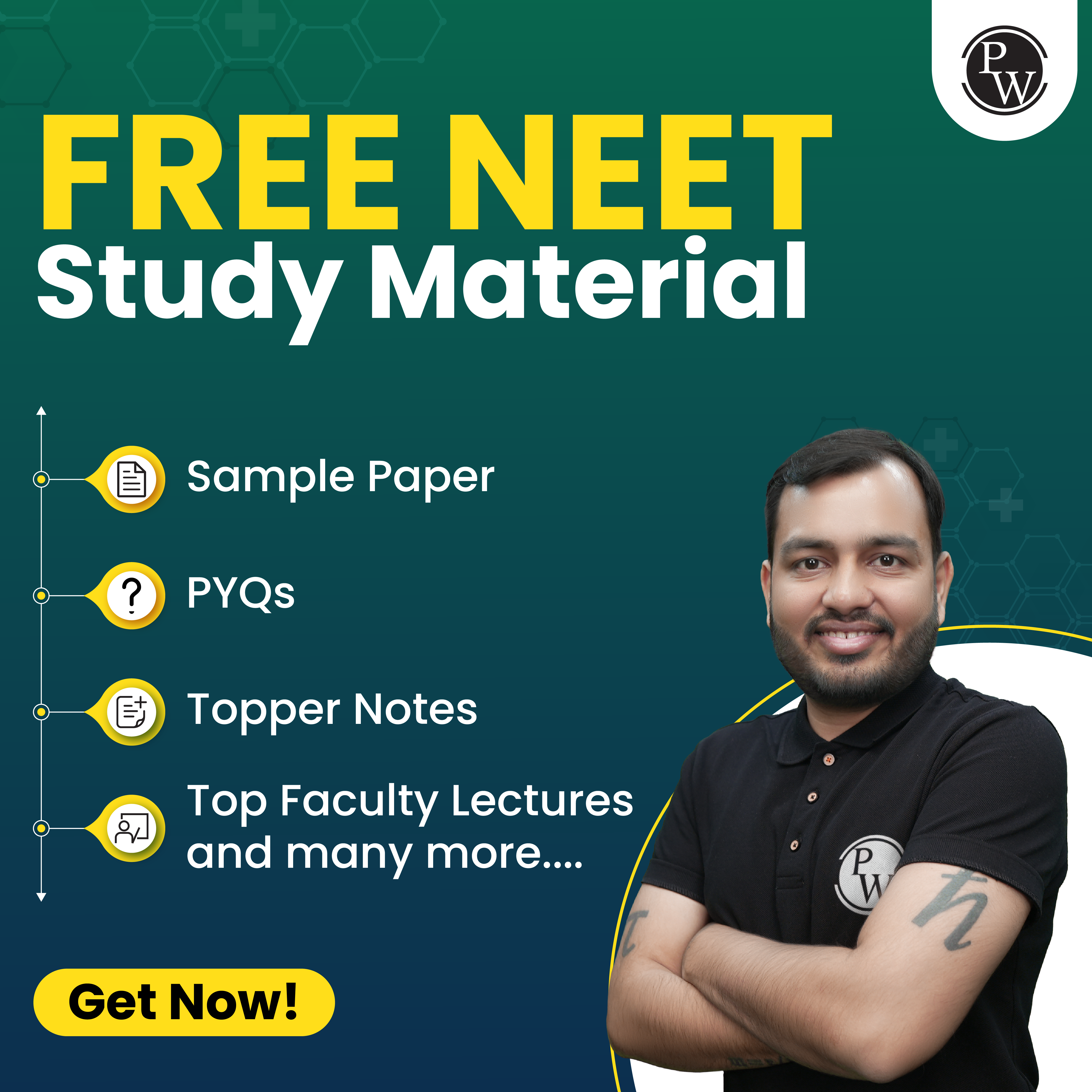
Mechanical Properties of Solids MCQs and Answers
Mechanical Properties of Solids MCQs offer an effective way for students to assess their understanding and prepare for exams. Each question is usually accompanied by four options, with only one being correct. The answers are provided to help students verify their responses and learn from their mistakes. Practicing these MCQs with answers enables students to become familiar with the types of questions they may face in exams, enhancing their accuracy and speed in problem-solving. This practice is essential for establishing a strong foundation in physics and achieving high scores in competitive exams like NEET. Additionally, understanding the NEET Physics Chapter-wise weightage can help students focus their efforts on topics that are more likely to appear in the exam, making their preparation more strategic and effective.| NEET Physics MCQs | |
|---|---|
| Units and Measurements MCQs | Motion in a plane MCQs |
| Mathematics Tools MCQs | Newton’s laws of motion MCQs |
| Motion in a straight line MCQs | Gravitation MCQs |
Q 1. A and B are two wires. The radius of A is twice that of B. They are stretched by the same load. Then the stress on B is;
(1) equal to that on A. (2) four times that on A. (3) two times that on A. (4) half that on A. Ans: 2Q 2. A and B are the two wires, the radius of A is thrice that of B. They are stretched by the same load. Then the stress on B is;
(1) same as that on A. (2) 2 times that on A. (3) 3 times that on A. (4) 9 times that on A. Ans: 4Q 3. The ratio of displacement of the upper face relative to the lower face to the distance between two faces of a solid substance is;
(1) Longitudinal strain (2) Shear strain (3) Shear stress (4) Compressive stress Ans: 2Q 4. Hooke's law essentially defines;
(1) stress (2) strain (3) yield point (4) elastic limit Ans: 4Q 5. Under elastic limit, the stress is;
(1) inversely proportional to strain. (2) directly proportional to strain. (3) square root of strain. (4) independent of strain. Ans: 2Q 6. According to Hooke's law of elasticity, the ratio of stress to strain;
(1) remains constant. (2) increases. (3) decreases. (4) zero. Ans: 1Q 7. Two wires A and B of copper having lengths in the ratio 3: 1 and their radii ratio of 1 : 3 are stretched by the same force. The ratio of the longitudinal strain in the two wires A and B will be;
(1) 81: 1 (2) 1: 81 (3) 9: 1 (4) 1: 9 Ans: 3Q 8. A wire can be broken by applying a load of 30 kg-wt. The force required to break the wire of twice the diameter is;
(1) 240 kg-wt (2) 100 kg-wt (3) 120 kg-wt (4) 150 kg-wt Ans: 3Q 9. The breaking stress of a wire depends upon;
(1) length of wire. (2) radius of the wire. (3) material of the wire. (4) shape of the cross-section. Ans: 3Q 10. A wire can be broken by applying a load of 200 N. The force required to break another wire of the same diameter and same material, but double in length, is;
(1) 200 N (2) 400 N (3) 600 N (4) 800 N Ans: 1Q 11. The diagram shows the stress v/s strain curve for materials A and B. From the curves, we conclude that;
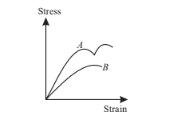 (1) A is brittle but B is ductile.
(2) A is ductile but B is brittle.
(3) Both A and B are ductile.
(4) Both A and B are brittle.
Ans: 2
(1) A is brittle but B is ductile.
(2) A is ductile but B is brittle.
(3) Both A and B are ductile.
(4) Both A and B are brittle.
Ans: 2
Q 12. The load versus extension graph for four wires of the same length and the same material is shown in the figure. The thinnest wire is represented by a line; the load
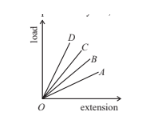 (1) OC
(2) OD
(3) OA
(4) OB
Ans: 3
(1) OC
(2) OD
(3) OA
(4) OB
Ans: 3
Q 13. Assertion (A): Steel is more elastic than rubber.
Reason (R): Under the same deforming force, steel is deformed less than rubber.
(1) Both Assertion (A) and Reason (R) are true and Reason (R) is a correct explanation of Assertion (A). (2) Both Assertion (A) and Reason (R) are true but Reason (R) is not a correct explanation of Assertion (A). (3) Assertion (A) is true and Reason (R) is false. (4) Assertion (A) is false and Reason (R) is true. Ans: 1Q 14. Assertion (A): Young's modulus for a perfectly plastic body is zero.
Reason (R): For a perfectly plastic body, restoring force is zero.
(1) Both Assertion (A) and Reason (R) are true and Reason (R) is a correct explanation of Assertion (A). (2) Both Assertion (A) and Reason (R) are true but Reason (R) is not a correct explanation of Assertion (A). (3) Assertion (A) is true and Reason (R) is false. (4) Assertion (A) is false and Reason (R) is true. Ans: 1Q 15. The length of a metal wire is 10 cm when the tension in it is 20 N and 12 cm when the tension is 40 N. Then the natural length of the wire (in cm) is;
(1) 6 (2) 4 (3) 8 (4) 9 Ans: 3Q 16. The following four wires of length L and radius r are made of the same material. Which of these will have the largest extension, when the same tension is applied?
(1) L = 400 cm, r = 0.8 mm (2) L = 300 cm, r = 0.6 mm (3) L = 200 cm, r = 0.4 mm (4) L = 100 cm, r = 0.2 mm Ans: 4Q 17. Elasticity of a rigid body is;
(1) unity (2) zero (3) infinite (4) Can't predict Ans: 3Q 18. In the case of liquids;
(1) only bulk modulus is defined. (2) only bulk modulus and Young's modulus are defined. (3) only bulk modulus and shear modulus are defined. (4) all three moduli (Bulk, Young's, and Shear) are defined. Ans: 1Q 19. A uniform cubical block is subjected to volumetric compression, which decreases each side by 2%. The Bulk strain produced in it is;
(1) 0.03 (2) 0.02 (3) 0.06 (4) 0.12 Ans: 3Q 20. The lower surface of a cube is fixed. On its upper surface, force is applied at an angle of 30° from its surface. The change will be in its;
(1) shape (2) size (3) Volume (4) Both shape and size Ans: 4Q 21. Poisson's ratio can not have the value;
(1) 0.1 (2) 0.7 (3) 0.2 (4) 0.5 Ans: 2Q 22. The length of a wire is increased by 0.3%. Find the percentage increase in its volume, if Poisson's ratio of wire material is 0.5.
(1) 0.3% (2) 0.9% (3) 0.27% (4) 0% Ans: 4Q 23. Two wires of the same diameter of the same material having the length l and 4l. If the force F is applied on each, the ratio of the work done in the two wires will be;
(1) 2: 1 (2) 4: 1 (3) 1: 2 (4) 1: 4 Ans: 4Q 24. A wire suspended vertically from one of its ends is stretched by attaching a weight of 500 N to the lower end. The weight attached stretches the wire by 1mm. What is the elastic energy stored in the wire?
(1) 0.625 J (2) 0.125 J (3) 0.110 J (4) 0.25 J Ans: 4Q 25. If work done in stretching a wire by 1mm is 2 J, the work necessary for stretching another wire of the same material, but with double the radius and half the length by 1mm in joule is;
(1) 0.25 J (2) 4 J (3) 8 J (4) 16 J Ans: 4Q 26. A wire suspended vertically from one end is stretched by attaching a weight 200 N to the lower end. The weight stretched the wire by 1 mm. The elastic potential energy gained by the wire is;
(1) 0.1 J (2) 0.2 J (3) 0.4 J (4) 10 J Ans: 1Q 27. If we add impurity into a material then elasticity;
(1) may increase or decrease (2) always increases (3) remains the same (4) always decreases Ans: 1



